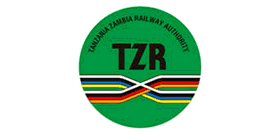 TAZARA: Boosting Operational Capabilities, Enhancing Regional Integration
TAZARA: Boosting Operational Capabilities, Enhancing Regional Integration
In a recent interview with Railways Africa Magazine, at the Land-Linked Zambia 2024 event, Bruno Ching’andu, Managing Director of the Tanzania-Zambia Railway Authority (TAZARA), provided significant insights into the ongoing efforts to revitalise the TAZARA railway system, which is jointly owned by the governments of Zambia and Tanzania. He highlighted the strategic enhancements planned for TAZARA, aimed at boosting its operational capabilities and fostering regional integration.
TAZARA Operational Improvements Bolstered by Zambia and Tanzania Government Support
Bruno began by acknowledging that despite the challenges, the railway is operational, thanks to critical support from the respective governments, which has provided much-needed working capital. This financial injection is addressing fundamental issues such as insufficient funds that previously hindered the railway’s operations. Specifically, this capital has facilitated the purchase of traction motors for locomotives and supported the rehabilitation of 100 wagons at the Mpika and Dar es Salaam workshops, with completion expected within a three-month timeline starting from March this year.
These enhancements and rehabilitations are set to increase the railway’s cargo capacity, allowing for the addition of five extra trains, thereby boosting the transported volume by approximately 60,000 tonnes. This expansion is expected not only to enhance revenue but also to streamline operations significantly.
TAZARA Welcomes Additional Private Rail Operator Through Open Access Agreement
TAZARA’s established strategy of integrating private operators into its network continues to bear fruit, with the signing of an Open Access Agreement with Bravo Group Ltd. This partnership is not a departure from TAZARA’s established path but an affirmation of its commitment to fostering economic growth and opening up business opportunities along the Dar es Salaam Corridor.
Bravo Group, a local Tanzanian company, is currently organizing the necessary rolling stock and securing the appropriate operating license to commence operations on the TAZARA line. The Land Transport Regulatory Authority (LATRA) is the entity tasked with providing the necessary licenses and permits.
The benefits for TAZARA from this agreement are multifaceted. Firstly, the access fees generated will contribute to the rehabilitation and ongoing maintenance of the railway track. Secondly, the initiative will shift cargo movement from road to rail, aligning with the government’s transportation objectives. Bruno emphasises the significance of this shift, noting that even if TAZARA does not directly transport the cargo, the transition from road haulage to rail is a strategic goal that both governments are eager to see realised.
* Calabash Freight is currently the other operator on the TAZARA line.
TAZARA Revitalisation Programme On Hold For Now
A major talking point over the last few months has been the proposed TAZARA revitalisation programme, requiring an investment of about half a billion dollars to modernise the infrastructure, procure new rolling stock and implement a signalling system. However, Bruno confirms that this plan has been set aside as both governments shift towards a concession strategy, meaning that the funding will not come from government coffers but rather from an investor. Negotiations are well underway, and further updates are expected in the coming weeks. It is important to note that while the initial investment required was half a billion USD, the new deal represents an investment opportunity of 1 billion USD.
Reverting to the revitalisation programme, and noting that this is on hold until the concession is in place, also means that planned procurement activities are also on hold.
Going forward, TAZARA will still facilitate the movement of freight rail cargo on behalf of the investor.
TAZARA’s Role in Regional Integration and Connectivity
TAZARA is a key player in regional railway operations, aligning seamlessly with the goals of regional integration. It operates on the cape gauge system, which is standardised across the Southern African Development Community (SADC). This uniformity allows for uninterrupted rail service across SADC, utilising the same equipment—a considerable advantage for TAZARA.
Moreover, TAZARA could facilitate connections with the East African Community. In a small town in Tanzania, two railway systems “meet”. This means that TAZARA can transfer cargo from its cape gauge 1067 mm line to the metre gauge line. Historically, this arrangement enabled cargo movements to Uganda, demonstrating TAZARA’s extensive reach and operational flexibility.
A stumbling block to seamless regional integration, Bruno noted in his presentation on day 2 of Land-Linked Zambia, is that it is imperative that the different countries standardise and or integrate systems to enhance seamless transport in the region, especially custom systems at borders.
The Future of TAZARA
Bruno Ching’andu remains optimistic about the ongoing negotiations for the concession, set to progress in the coming weeks. This pivotal development is expected to secure the financial and operational stability of TAZARA, aligning it with the broader economic objectives of the African Continental Free Trade Area and the SADC railway master plan.
